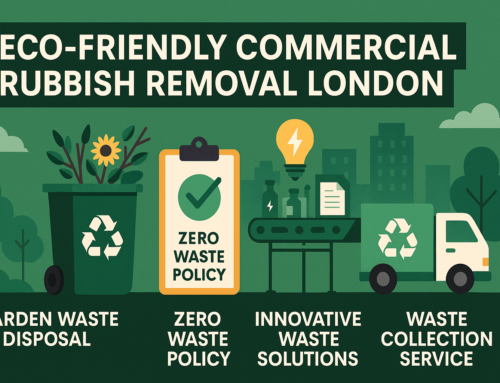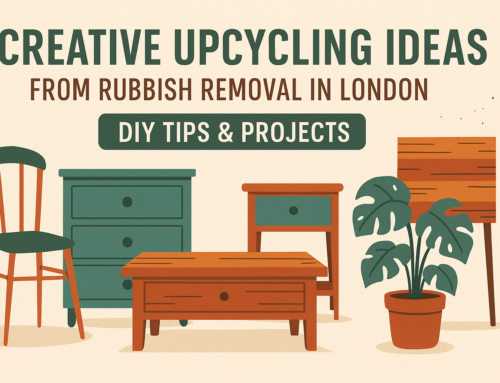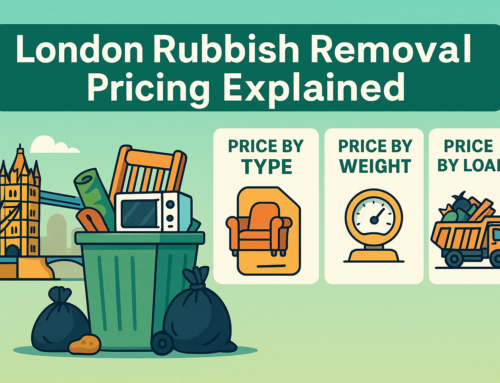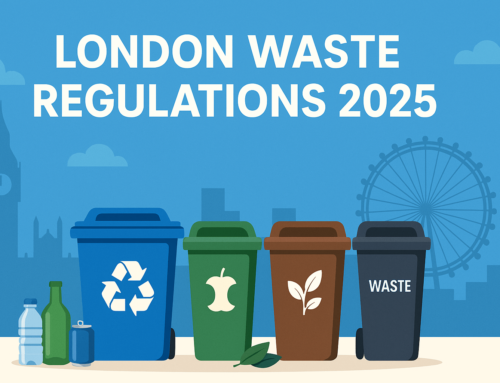When you wheel your bin to the curb, you might not think about what happens next. But every item you discard begins a complex journey through the UK’s waste management system. This journey—from pickup to recycling or final disposal—is crucial to sustainability and resource conservation. By learning how the system works, you can improve your own habits and reduce your environmental impact.
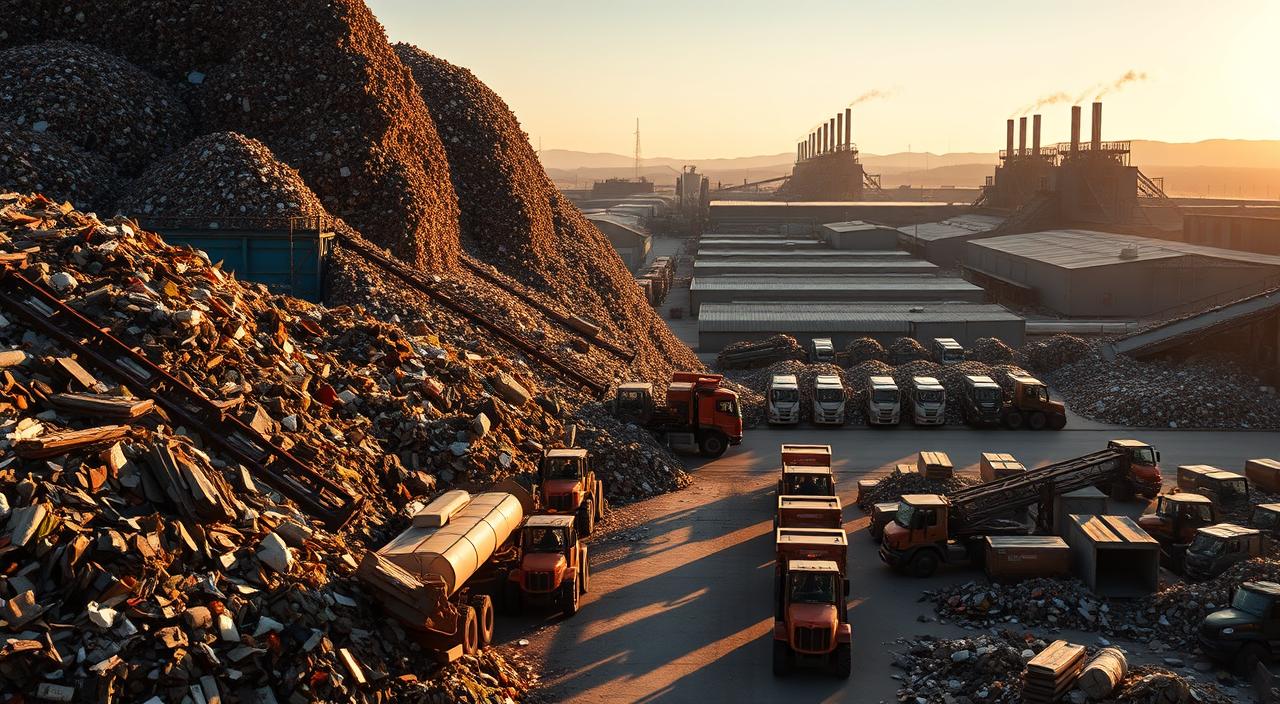
Key Takeaways
- The rubbish journey UK follows a multi-stage system, from collection to final processing.
- UK households generate over one tonne of waste per year.
- Efficient recycling and energy recovery processes reduce landfill dependency.
- Policy reforms and technology are improving waste management results.
- Informed households can significantly boost the system’s effectiveness.
How the Rubbish Journey UK Begins
The process always begins at home. When you sort your rubbish correctly, you set the entire system up for success.
What Happens When Crews Collect Your Bins?
Local authorities organise regular waste collections using specialised trucks. These vehicles collect different types of waste—general, recycling, and food. Crews check bins for contamination and sort waste according to council guidelines. Increasingly, councils use route optimisation software to save fuel and lower emissions.
By correctly separating your waste, you reduce contamination and improve recycling efficiency from the very first step.
What Kind of Waste Comes From UK Homes?
UK households typically produce a wide mix of waste:
- General waste
- Dry recyclables (paper, glass, plastic, and metals)
- Garden and food waste
- Hazardous materials (batteries, paint, electronics)
When you separate waste properly, it speeds up processing and makes recycling more effective.
For help with large or unwanted items, explore furniture removal in London.
Transport: The Next Stage of the Rubbish Journey UK
Once collected, waste needs to be moved quickly and safely to the next stage in the journey.
How Waste Is Transported Across the UK
Councils and waste contractors rely on different vehicles to handle various loads:
| Vehicle Type | Purpose |
|---|---|
| Bin lorries | Pick up household and recyclable waste |
| Roll-on roll-off trucks | Handle bulky or construction waste |
| Articulated lorries | Transport large volumes across long distances |
These vehicles transfer waste to nearby facilities or regional hubs, depending on its type and destination.
The Role of Transfer Stations
Transfer loading stations act as intermediate stops. Here, smaller trucks unload their collections into larger vehicles for more efficient transport.
Moreover, staff at these stations weigh the waste and check documentation. Environmental controls at these facilities also minimise odours and keep dangerous materials contained.
Sorting and Recycling: The Heart of the Rubbish Journey UK
After transportation, recyclables head to Material Recycling Facilities (MRFs) where sorting and processing happen.
How Facilities Sort Recyclable Waste
MRFs begin by feeding waste onto conveyor belts. Staff manually remove contaminants before machines separate items by size, shape, and material.
| Technology Used | Function |
|---|---|
| Trommels | Spin to separate materials by size |
| Ballistic Separators | Sort by shape, bounce, and density |
| Optical Sorters | Use light to identify and separate material types |
| Magnetic Systems | Extract ferrous and non-ferrous metals |
By combining manual checks with advanced machinery, MRFs recover as many usable materials as possible.
Where Does Each Material Go?
Each type of sorted waste follows a different path:
| Material | Processing Method | Final Product |
|---|---|---|
| Paper/Cardboard | Pulped and reformed | Office paper, packaging |
| Plastics | Sorted and melted into pellets | New plastic items |
| Metals | Melted in foundries | Construction or consumer goods |
| Organic Waste | Composted or digested | Biogas and fertiliser |
Before throwing furniture out, check your options for furniture donation vs disposal.
Not Everything Gets Recycled: Energy Recovery and Landfills

Although recycling handles a large percentage of waste, not all items are recyclable. The rest follows one of two paths.
How Energy-from-Waste Facilities Work
Non-recyclable materials can be incinerated at Energy Recovery Facilities (EfW). These high-tech plants burn rubbish to create steam, which then generates electricity and heat.
For example, the Trident Park plant in Cardiff powers over 50,000 homes. It also uses filtration technology to reduce pollution and reuse ash in construction.
When Does Waste Go to Landfill?
Landfills are a last resort, but they still play a role in the rubbish journey UK. Modern landfills are safer than their older counterparts. They use:
- Lined cells to prevent soil contamination
- Methane recovery systems for clean energy
- Monitoring systems for environmental compliance
| Method | Environmental Impact | Energy Output |
|---|---|---|
| Recycling | Lowest; reduces raw resource use | Variable |
| Energy Recovery | Low; high-tech filtration | High (electricity, heat) |
| Landfilling | Controlled but not ideal | Moderate (methane capture) |
Policy and Innovation Are Shaping the Rubbish Journey UK
The UK’s waste system is changing. New technologies and laws are helping reduce landfill and increase recycling.
Circular Economy and Smarter Waste Management
A circular economy means designing products that can be reused, repurposed, or recycled—minimising waste overall.
Key developments include:
- Extended Producer Responsibility (EPR): Manufacturers must fund recycling for their products.
- Deposit Return Schemes: Encourage recycling of bottles and cans.
- AI Sorting: Improves accuracy in high-speed waste separation.
- Smart Bins: Use sensors to notify collection services when full.
These innovations are helping cities and councils improve their waste handling year by year.
How You Can Improve the Rubbish Journey UK
You might not control the waste system, but your decisions have a direct impact. Here’s what you can do:
- Sort waste correctly: Learn your local council’s recycling guidelines.
- Avoid contamination: Keep food and liquids out of recycling bins.
- Reuse before disposing: Repair or donate when possible.
Conclusion: Take Action and Shape the Rubbish Journey UK
The path your waste takes—starting from your home—reflects both individual choices and national systems. As the UK moves towards a greener, circular future, your role becomes even more important.
When you sort your rubbish carefully, reduce contamination, and choose reuse over disposal, you help transform the waste cycle. The rubbish journey UK is not just about getting rid of things—it’s about making sustainable choices every day.
